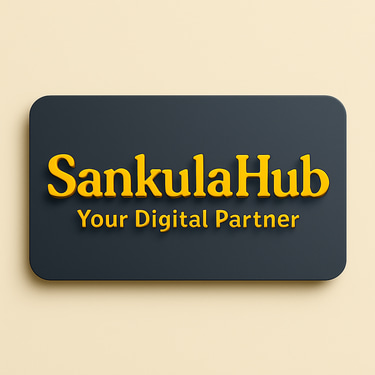Protect Your Digital Products: Anti-Piracy Tips
HOW TO EARN ONLINE


Protect Your Digital Products: Anti-Piracy Tips
Simple, Effective Ways to Safeguard Your Templates, eBooks, Courses, and Files from Unauthorized Sharing
Creating digital products like eBooks, templates, courses, or presets takes time, creativity, and effort. But once your product is out in the world, there’s one harsh reality every digital seller must face:
Your product can be copied, shared, or pirated — sometimes within hours of launching.
Whether you're selling a ₹199 Notion template or a ₹999 eBook bundle, it’s critical to take smart steps to protect your work, your income, and your peace of mind.
This guide offers practical anti-piracy strategies for Indian and global creators who want to safeguard their digital products without hiring developers or adding complex tech.
🚨 What Is Digital Product Piracy?
Piracy means someone:
Buys or downloads your digital product and shares it for free
Uploads it to a public forum, Telegram group, or pirated website
Sells it under their own name
Publishes it as their own on platforms like Amazon KDP or Etsy
You lose sales, credit, and future income — and it can damage your brand’s reputation.
✅ 7 Practical Anti-Piracy Tips for Creators
1. Use Download Protection Tools
Platforms like Payhip, Gumroad, and SendOwl offer:
Expiring download links
Limited downloads per user
Automatic delivery with buyer tracking
If you’re using your own website (like SankulaHub), connect secure cloud storage (Google Drive, Dropbox) and enable view-only or restricted access when needed.
2. Add Light, Non-Intrusive Watermarks
For templates, planners, or PDF guides:
Place your brand name or domain in the footer (e.g., © SankulaHub)
Use soft grayscale text on key pages or sample images
Avoid bold watermarks that ruin user experience
Watermarks don’t prevent piracy, but they discourage theft and prove ownership.
3. Deliver Google Drive Files in “View Only” Mode (When Possible)
If you’re offering editable files (Canva links, Docs, Sheets):
Share via Google Drive with “View Only” permissions
Ask users to “Make a copy” instead of editing your original
Disable download/print/copy options for sensitive content
Store in folders with access logs and expiration options
Bonus: Use Google Workspace to track access activity, if needed.
4. Avoid Sharing Direct Files on WhatsApp or Email
Never send raw files (.docx, .xlsx, .zip) manually to customers. Instead:
Use password-protected ZIP folders
Add a “Read Me” file reminding buyers not to reshare
Deliver via automated platforms with secure download links
The more manual your delivery process, the more vulnerable your product becomes.
5. Use Copyright Notices and Terms in Every File
Even if you're not registering formal copyright, include a basic notice:
“This file is for personal use only. Distribution, resale, or duplication is prohibited and subject to copyright violation under Indian IT Act and international law.”
Add this on the cover page or inside every digital file — especially PDFs, eBooks, and templates.
6. Register Your Work (Optional But Useful)
In India, creators can:
Register copyright via copyright.gov.in
Use timestamped proof (email, GitHub, file logs, etc.)
Store product creation logs on cloud backups
This isn't mandatory for selling, but gives you legal backing if you ever need to issue takedown notices or file complaints.
7. Set Up a Monitoring System
Search for:
Your product name on Google
“Free download + your brand name”
PDF titles on piracy forums or Telegram channels
If you find unauthorized links:
Issue a DMCA takedown notice
Report to hosting providers or file-sharing platforms
Email the offender with a polite but firm legal warning
You can use free services like Google Alerts to monitor mentions of your products.
🚫 What Not to Do
❌ Don’t add over-the-top watermarks that ruin your design
❌ Don’t avoid selling out of fear — piracy is a risk, not a reason to quit
❌ Don’t chase every downloader — focus on growing legitimate buyers
❌ Don’t assume piracy won’t affect you — it’s better to be prepared early
🔐 Bonus: Add This to Your “Thank You” Page or Email
“Thank you for supporting original creators. Please do not share this file publicly or in groups. It helps us continue making valuable tools and resources for you.”
This message builds respect and reminds buyers that ethical use matters.
🧠 Final Thought: Focus on Growth, Not Fear
No anti-piracy system is 100% foolproof. But that shouldn't stop you from selling confidently.
Creators who keep publishing, improving, and marketing often outperform piracy through community trust. Your brand, content, and experience can’t be pirated — and that’s your true edge.
Protect what matters. But don’t let fear stop your growth.
🔗 Explore More:
Meta Description :
Protect your digital products from piracy. Learn practical tips to safeguard your templates, eBooks, courses, and downloads without expensive software or tools.
